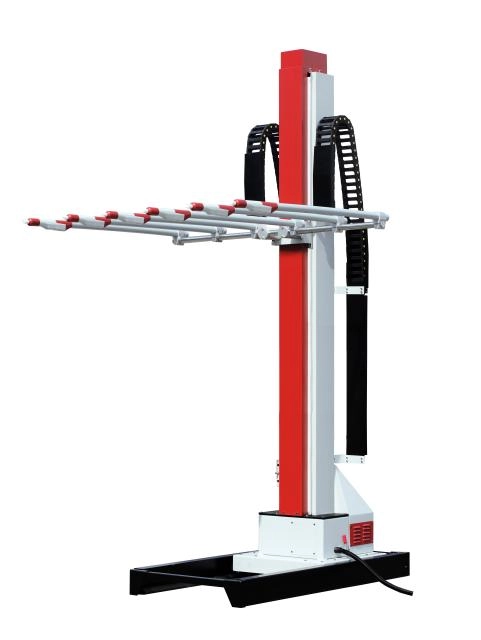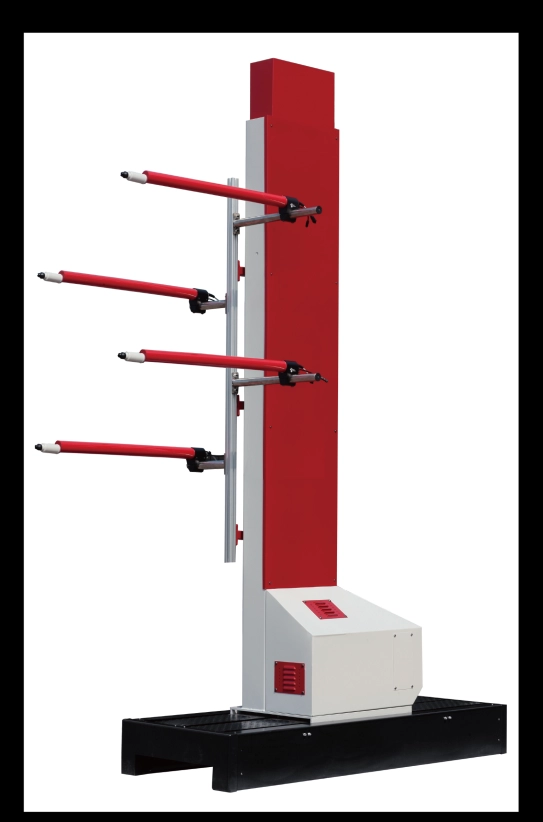Content Menu
● Understanding Electrostatic Spray Guns
>> How Electrostatic Spray Guns Work
>> Conventional Challenges
● The Emergence of Smart Control Systems
>> Components of Smart Control Systems
>> Types of Controls
● Enhancements to Electrostatic Spray Gun Performance
>> Improved Transfer Efficiency
>> Consistent Coating Quality
>> Enhanced Operator Safety
>> Reduced Downtime and Maintenance
● Key Technologies Driving Smart Electrostatic Systems
>> Artificial Intelligence and Machine Learning
>> Internet of Things (IoT) Integration
>> Advanced Sensors
>> Energy-Efficient Power Supplies
● Applications and Industries Benefiting from Smart Electrostatic Spray Guns
>> Automotive Manufacturing
>> Aerospace Industry
>> Consumer Electronics
>> Furniture and Woodworking
>> Industrial Equipment and Machinery
● Implementation Considerations
>> Initial Investment
>> Operator Training
>> Integration with Existing Systems
● Future Trends in Smart Electrostatic Spray Technology
>> Greater Automation
>> Enhanced Data Analytics
>> Sustainability Focus
>> Miniaturization and Portability
● Frequently Asked Questions
Electrostatic spray guns have revolutionized painting and coating industries by improving transfer efficiency and reducing waste dramatically. With the advent of intelligent technology, smart control systems are now integrated into these spray guns, greatly enhancing their performance, precision, and overall operational efficiency. This article explores the technology behind smart control systems, how they improve electrostatic spray gun performance, their advantages, common applications, and future developments.

Understanding Electrostatic Spray Guns
Electrostatic spray guns apply a charged paint or coating material to a grounded surface, utilizing electrostatic forces to achieve uniform coverage with minimal overspray. This method increases transfer efficiency, saving materials and reducing environmental impact.
How Electrostatic Spray Guns Work
These guns use a high-voltage power supply to charge the paint particles as they exit the nozzle. The charged particles are attracted to the grounded workpiece, allowing for even coverage on complex shapes and difficult-to-reach areas.
Conventional Challenges
Despite their benefit, traditional electrostatic spray guns face challenges such as uneven coating thickness, sensitivity to environmental conditions like humidity, and lack of precise control over charging and flow rates, leading to inefficiencies or defects in coating.
The Emergence of Smart Control Systems
Smart control systems integrate sensors, microprocessors, and feedback mechanisms to monitor and adjust spray parameters in real-time, overcoming traditional limitations.
Components of Smart Control Systems
- Sensors: Detect parameters like voltage, current, fluid flow, and environmental conditions.
- Microcontrollers: Process sensor data to make instant adjustments.
- Actuators: Modify spray gun settings based on controller signals.
- User Interfaces: Allow operators to set parameters, view system status, and receive alerts.
Types of Controls
- Voltage Regulation: Automatically adjusts the electrostatic charging voltage to optimize particle attraction.
- Flow Control: Maintains consistent paint delivery to avoid fluctuations.
- Environmental Compensation: Alters operation based on temperature and humidity to ensure consistent performance.
Enhancements to Electrostatic Spray Gun Performance
Smart control systems significantly improve the efficiency, quality, and safety of electrostatic spraying processes.
Improved Transfer Efficiency
By precisely regulating charge and flow rates, these systems reduce paint waste and overspray, achieving higher material transfer efficiency. This leads to cost savings and eco-friendly operations.
Consistent Coating Quality
Through real-time monitoring, the system ensures uniform paint application thickness and reduces defects such as runs, sags, or bare spots. Adjustments compensate for changes in spray distance or environmental factors.
Enhanced Operator Safety
Smart controls monitor high voltage levels and fluid flow to prevent unsafe operating conditions. Automated shutdowns and alarms reduce risks of electric shock or fire hazards.
Reduced Downtime and Maintenance
Predictive maintenance features alert operators of wear or component failures before breakdowns occur. Continuous monitoring extends equipment life and limits unplanned downtime.
Key Technologies Driving Smart Electrostatic Systems
Artificial Intelligence and Machine Learning
Self-learning algorithms analyze usage patterns and environmental data to optimize spray parameters, improving performance dynamically over time.
Internet of Things (IoT) Integration
Connected spray guns transmit real-time data to centralized control systems or cloud platforms, enabling remote monitoring, diagnostics, and data analytics.
Advanced Sensors
High-precision sensors track flow rates, particle charge, temperature, and humidity, enabling faster and more accurate control responses.
Energy-Efficient Power Supplies
Smart power modules adjust output to maintain optimal spray conditions with minimum energy consumption, lowering operating costs.
Applications and Industries Benefiting from Smart Electrostatic Spray Guns
Automotive Manufacturing
Precise paint application ensures high-quality finishes and faster production cycles while minimizing paint use and emissions.
Aerospace Industry
Complex shapes and stringent coating requirements benefit from consistent electrostatic spraying supported by smart controls.
Consumer Electronics
Small parts with intricate designs receive even coatings essential for protection and aesthetics.
Furniture and Woodworking
Uniform finishes on varied surfaces improve product appearance and durability, with reduced material waste.
Industrial Equipment and Machinery
Wear-resistant and corrosion-proof coatings extend equipment life, with smart controls ensuring reliability.
Implementation Considerations
Initial Investment
Smart control-equipped electrostatic guns generally cost more upfront than traditional models, but return on investment comes from reduced material costs, improved quality, and less downtime.
Operator Training
Staff need training to utilize and maintain smart systems effectively, including interpreting feedback and responding to alerts.
Integration with Existing Systems
Compatibility with current painting lines and control infrastructure should be assessed for smooth deployment.
Future Trends in Smart Electrostatic Spray Technology
Greater Automation
Integration with robotic spray systems will enable fully automated painting with adaptive and intelligent control.
Enhanced Data Analytics
Big data tools will refine process optimizations through detailed performance insights and trend analysis.
Sustainability Focus
Further improvements in transfer efficiency and waste reduction will support greener manufacturing processes.
Miniaturization and Portability
Smaller, lightweight smart electrostatic guns will expand use in field applications and workshops.

Frequently Asked Questions
1. How do smart control systems improve electrostatic spray gun efficiency?
They optimize voltage and flow in real-time, reducing paint waste and ensuring maximum delivery to the target surface.
2. Can smart controls adapt to different environmental conditions?
Yes, they use sensors to detect changes in temperature and humidity and adjust operating parameters accordingly to maintain consistent coating quality.
3. Are smart electrostatic spray guns difficult to operate?
While they feature advanced controls, user-friendly interfaces and training make them accessible for operators of varying skill levels.
4. What safety features are included in smart control systems?
Systems monitor operational parameters, provide alarms, and can shut down automatically to prevent hazards like electric shocks or fires.
5. Is it possible to retrofit existing electrostatic spray guns with smart control systems?
Some models allow retrofitting, but compatibility depends on the manufacturer and specific equipment. It's best to consult with suppliers.
Hot Tags: China, Global, OEM, private label, manufacturers, factory, suppliers, manufacturing company










































 .
. 